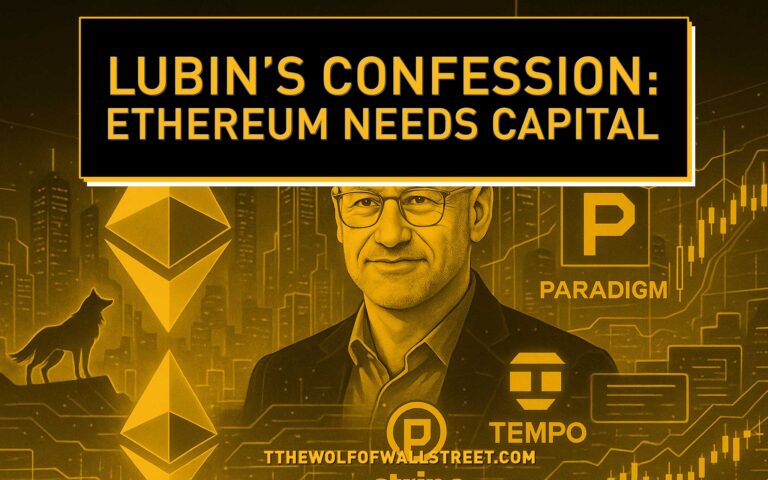Listen up. Before you even think about raising a single penny for your crypto project, you need to understand a fundamental truth of this game: attention is the only currency that matters. You’re not just competing for capital; you’re fighting for a sliver of an investor’s time, a resource more valuable than gold. They’re drowning in a sea of “revolutionary” projects, and they’ve built a razor-wire-laced filter for bullshit. If you can’t hook them in seconds, you’re already dead. This is where you learn what is a litepaper, and it’s the most important lesson you’ll get.
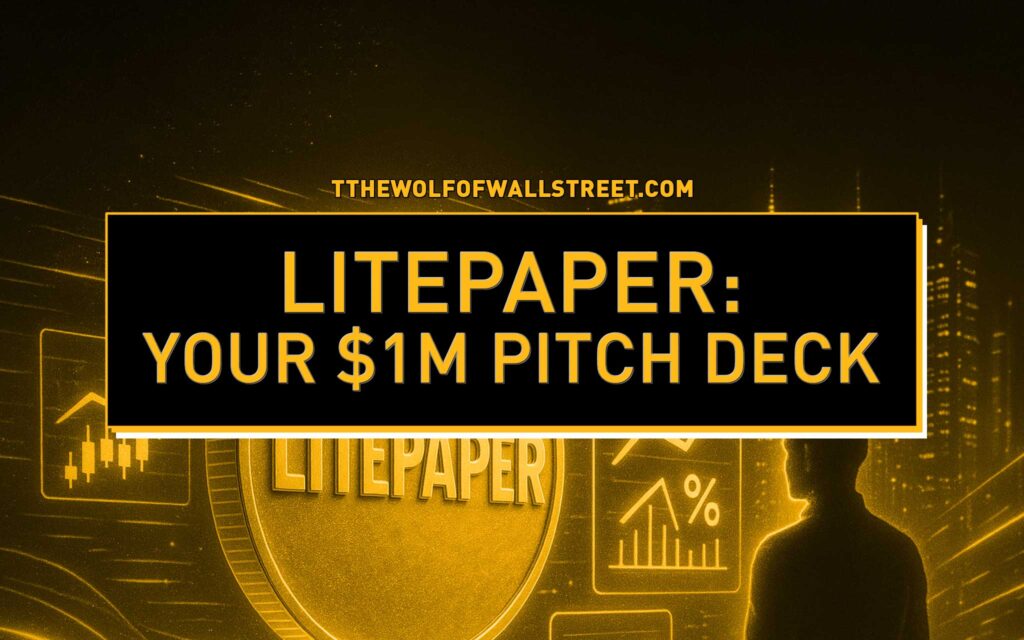
Forget the 100-page manifestos that nobody reads. That’s for the academics and the tyre-kickers. In the world of high-stakes crypto investment, speed is everything. Your first impression isn’t just important; it’s the only thing that matters. This is your seven-second window to hook the whale, to get them to lean in and see the fire in your eyes. This is where the litepaper comes in. It’s the ultimate sales pitch, your million-dollar handshake condensed into a document so sharp it could cut glass. It’s concise, it’s powerful, and it’s designed to do one thing and one thing only: get a serious investor to pick up the phone and say, “I’m in.”
Today, I’m not just going to tell you what a litepaper is. I’m going to show you how to forge one. I’m giving you the blueprint to craft a document so sharp, so brutally effective, it’ll have venture capitalists and crypto whales alike begging you to take their money. So, put your phone on silent, close your other tabs, and pay attention. The lesson starts now.
📈 Litepaper vs. Whitepaper: The Heavyweight Bout
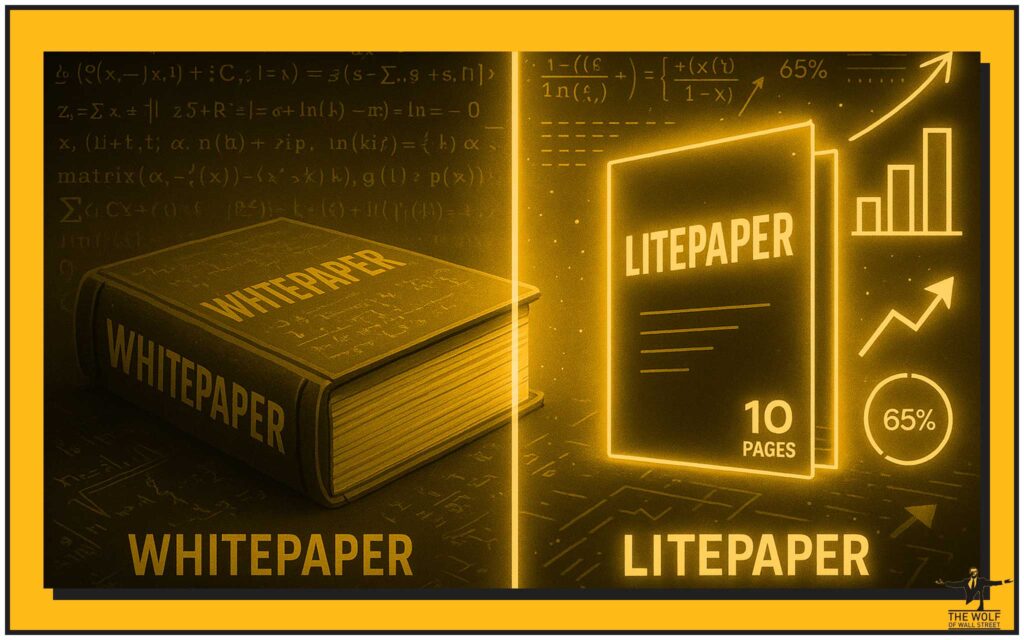
Let’s get one thing straight right out of the gate. A litepaper is not a “whitepaper-lite.” It’s not a diet version or a lazy summary. Thinking like that is for amateurs, and amateurs get wiped out in this market. A litepaper and a whitepaper are two different weapons designed for two different battlefields. Understanding the distinction is the first step toward winning the war for capital.
The Whitepaper: The Technical Bible
The whitepaper is your project’s encyclopedia. It’s an exhaustive, academic, deep-dive into the nuts and bolts of your technology. It’s filled with complex algorithms, cryptographic proofs, and dense technical architecture. It’s written for the engineers, the blockchain PhDs, and the due diligence teams who are paid to spend weeks tearing your project apart line by line.
Its purpose is to prove, beyond a shadow of a doubt, that your technology is sound, your code is viable, and your vision is technically achievable. It’s dense, it’s long, and frankly, it’s boring as hell for 99% of the population, including most of the people with the money. While it’s a crucial document for legitimacy, it’s not a sales tool. It’s a technical validation document. If you want to see what a full-blown technical document looks like, our guide on what is a white paper lays it all out.
The Litepaper: The Killer Closing Pitch
Now, the litepaper. This is your sales tool. This is your front-line weapon. It’s the sizzle reel, the movie trailer, the thirty-second elevator pitch that gets you in the room with the decision-makers. Its purpose is not to explain how every line of code works, but to explain why an investor should care. It focuses on the value proposition, the market opportunity, the business model, and the team of killers you’ve assembled to execute the vision.
It’s written for high-net-worth individuals, venture capitalists, and everyday investors—people who value their time above all else. They don’t have time to read a 50-page technical document. They have minutes, maybe seconds, to decide if your project is worth another look. The litepaper respects that. It delivers a high-impact, easily digestible summary of why your project is the next rocket ship to the moon.
Key Battlegrounds: A Head-to-Head Takedown
Let’s break it down so there’s no confusion.
- Length & Detail: A whitepaper can easily run 30, 50, even 100 pages. A litepaper? You keep it between 5 and 12 pages, max. Every single page has to count. It’s the difference between an unabridged dictionary and a cheat sheet with all the answers.
- Target Audience: The whitepaper targets the CTO. The litepaper targets the CEO and the investor. One audience wants to know if the engine works; the other wants to know how fast the car will go and how much money it will make them.
- Technicality: The whitepaper is filled with equations and code snippets. The litepaper is filled with charts, graphs, and simple, powerful language that explains the business case. You’re not trying to win a Nobel Prize in computer science; you’re trying to secure a multi-million-dollar investment.
Confusing these two is the single fastest way to get your project thrown in the trash. You don’t hand an engineering schematic to a venture capitalist. You give them the glossy brochure that shows them the finished skyscraper and tells them the ROI.
💰 Crafting the Perfect Pitch: The Core Components of a Litepaper
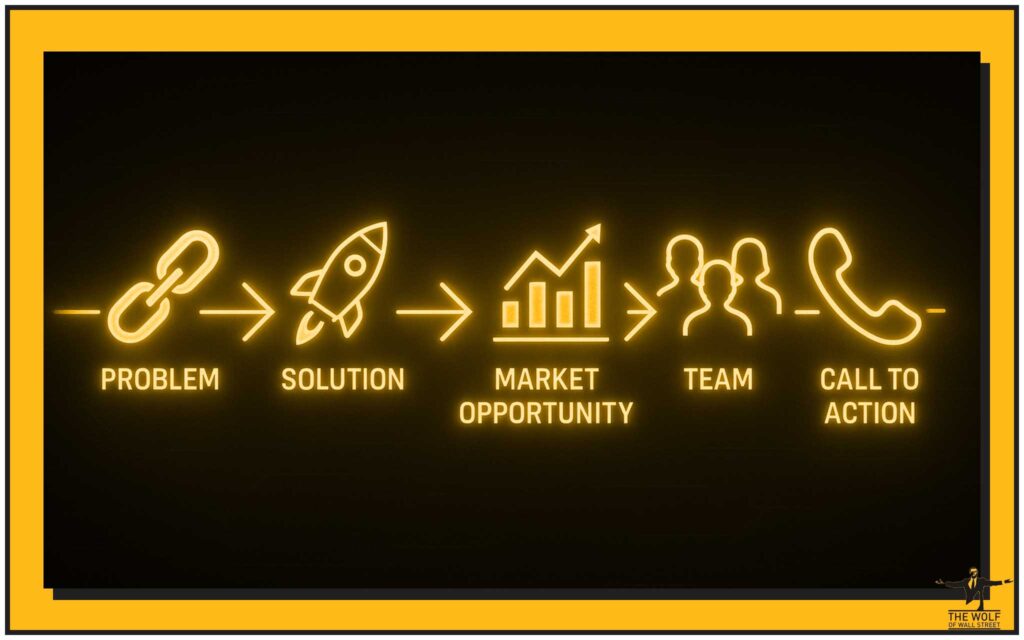
Alright, you understand the difference. Now it’s time to build this weapon from the ground up. A winning litepaper isn’t just a collection of facts; it’s a carefully constructed narrative designed to lead an investor from curiosity to conviction. Each section builds on the last, creating a straight line to the close. Here are the non-negotiable components.
Section 1: The Introduction (The Hook)
You have one paragraph. Maybe two. That’s it. This is where you grab them by the throat and refuse to let go. Open with a bold, audacious statement about the market you’re about to conquer. State your mission clearly and concisely. Don’t waste time with fluffy introductions. Hit them with the core value proposition immediately. Make it big, make it exciting, and make it unforgettable.
Section 2: The Problem (The Pain Point)
Before you can sell your solution, you have to sell the problem. What massive, expensive, infuriating problem exists in the world that you are about to solve? Don’t just state it; agitate it. Use statistics and real-world examples to show how much this problem is costing people in time, money, or opportunity. Make the investor feel the pain. If they don’t believe the problem is huge and urgent, they’ll never believe your solution is valuable.
Section 3: The Solution (Your Magic Bullet)
Now that they’re feeling the pain, you ride in on a white horse with the magic bullet. This is where you introduce your project. But you don’t present it as a solution; you present it as the only logical solution. Explain in simple, direct terms what your project does and how it directly solves the problem you just laid out. Use a simple diagram or flowchart if you have to. Clarity is king.
Section 4: Market Data & Opportunity (The Mountain of Cash)
Investors are sharks; they smell blood in the water. This section is the blood. Show them the money. Present hard data on the size of the market you’re targeting. Use charts from reputable sources to show its growth trajectory. Whether it’s DeFi, gaming, or enterprise solutions, you need to prove that you’re not fighting over scraps—you’re capturing a piece of a multi-billion-dollar pie. This is where you make the opportunity feel massive and tangible.
Section 5: Tokenomics (The Engine of Your Rocket Ship)
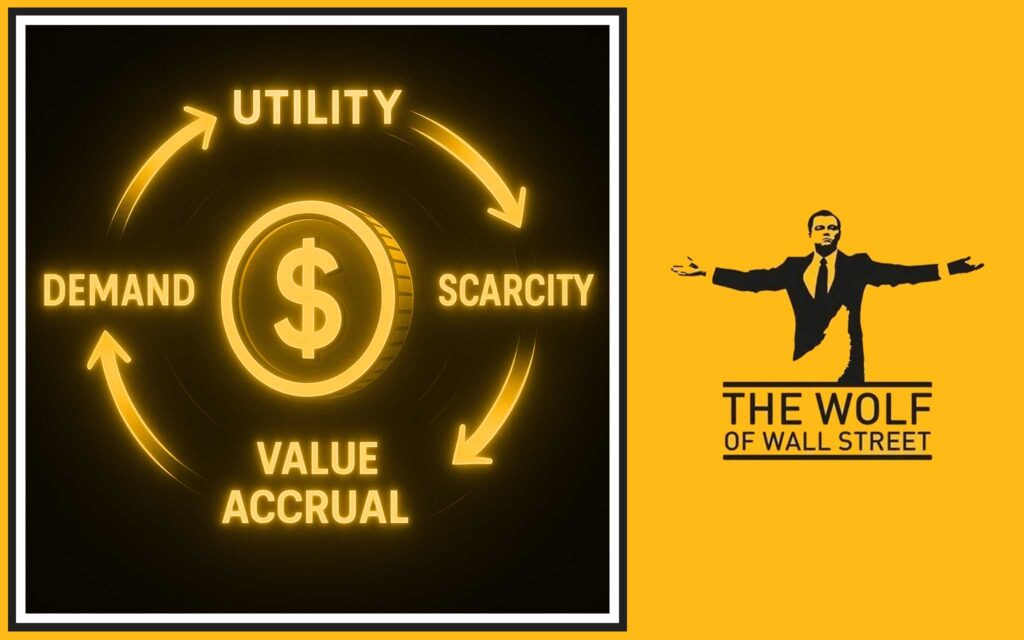
This section is where amateurs fumble the ball. Your token isn’t just a fundraising mechanism; it’s the economic engine of your entire ecosystem. You must explain its utility and value accrual in a way that makes sense. How is the token used? What drives demand for it? Is it a governance token, a utility token, or a security? How is the supply managed? A clear, well-designed tokenomic model is crucial. To get this right, you need to understand what is tokenomics inside and out, because this is the blueprint for your investor’s ROI.
Section 6: The Team (Your Pack of Killers)
Ideas are cheap. Execution is everything. Investors don’t just bet on horses; they bet on jockeys. This section is where you showcase your team. Who are the killers behind this vision? Include short bios, headshots, and links to their LinkedIn or Twitter profiles. Highlight their past wins, their relevant experience, and why they are the only team on the planet who can pull this off. Credibility here is non-negotiable.
Section 7: The Roadmap (The Path to Glory)
A vision without a plan is just a hallucination. You need to show investors a clear, believable roadmap with concrete milestones. What have you accomplished so far? What are the key deliverables for the next 6, 12, and 18 months? A visual timeline is perfect for this. Be ambitious but realistic. This shows you’re not just dreamers; you’re operators.
Section 8: Contact & Call to Action (Closing the Deal)
Never, ever end a sales pitch without a clear call to action. It’s the biggest rookie mistake in the book. By the time they finish reading, an interested investor should know exactly what to do next. “Join our Telegram for updates,” “Get on the pre-sale whitelist here,” “Contact our investment team at this email.” Be direct. Be clear. Guide them to the next step on the straight line to giving you their money. If you are starting from zero, the very first step is learning how to create a crypto token; everything else follows from that.
✍️ Writing a Litepaper That Sells: The Wolf’s Rules of Engagement
Having the right components is one thing. Assembling them with the skill of a master salesman is another. Anyone can list facts. A winner tells a story that moves people to action. Follow these rules, and you’ll craft a document that doesn’t just inform—it persuades, it excites, and it closes.
Rule #1: Speak Their Language (Clarity is Cash)
Get this through your head: you are not writing for your developers. You are writing for people who control capital. Ditch the complex technical jargon. Stop talking about sharding, zero-knowledge proofs, and Byzantine Fault Tolerance unless you can explain it with a simple analogy. Your goal is to make the business model so ridiculously simple to understand that a fifth-grader could explain it back to you. If your grandma can’t grasp the basic concept, you’ve failed. Clarity is what gets cheques written. Confusion gets you a “no.”
Rule #2: Brevity is Your Weapon
In the world of investing, time is money. Every single word in your litepaper must earn its place. If a sentence doesn’t build desire, create urgency, or explain a key benefit, delete it. Be ruthless. Cut the fluff. Use short sentences and short paragraphs. Use bullet points. Your reader’s attention is a depreciating asset. Don’t waste a second of it. Think of it as a series of perfectly timed punches: problem, solution, opportunity, team, boom, boom, boom. The ability to properly research crypto opportunities is a skill, and presenting your findings concisely is just as important.
Rule #3: Design Matters (Dress to Impress)
Would you show up to a billion-dollar pitch meeting in a stained t-shirt and ripped jeans? Of course not. So why would you present your multi-million-dollar idea in a sloppy, poorly designed document? A cheap-looking litepaper screams “amateur hour.” A clean, professional, and beautifully branded document screams, “We are a serious operation destined for greatness.” Invest in a good designer. Use high-quality graphics, charts, and infographics to break up the text and illustrate complex points. Your design is the first signal of your professionalism.
Rule #4: Transparency Builds Trust
Listen closely. In the crypto world, trust is fragile and easily broken. Investors have been burned by scams and rug pulls, and they can smell bullshit from a mile away. The only way to combat this is with radical transparency. Be upfront about everything. Disclose your token allocation clearly—how much is for the team, the foundation, marketing, and the public sale? Be honest about the potential risks. Provide verifiable links for your team members. Confidence comes from having nothing to hide. Don’t give them a single reason to doubt you.
🎯 Real-World Winners: Case Studies of Killer Litepapers
Theory is great, but seeing it in action is better. Let’s look at a couple of projects that nailed their litepaper and analyse what you can steal from them. Don’t reinvent the wheel. Model the masters who have already raised millions.
Polkadot: The Visionary

Polkadot’s early documentation was a masterclass in selling a grand, complex vision in a simple way. Their litepaper didn’t get bogged down in the deep, esoteric details of parachains and relay chains. Instead, it focused on the problem: blockchains can’t talk to each other. It was a simple, powerful pain point everyone in the space understood.
Then, it presented its solution: a “blockchain of blockchains” that would create a truly interoperable web3. The language was visionary and exciting. It sold the dream, the massive potential of a connected ecosystem, which was far more compelling to an investor than a dry explanation of the consensus mechanism. It painted a picture of the future and positioned Polkadot right in the centre of it.
NFTX: The Niche Dominator
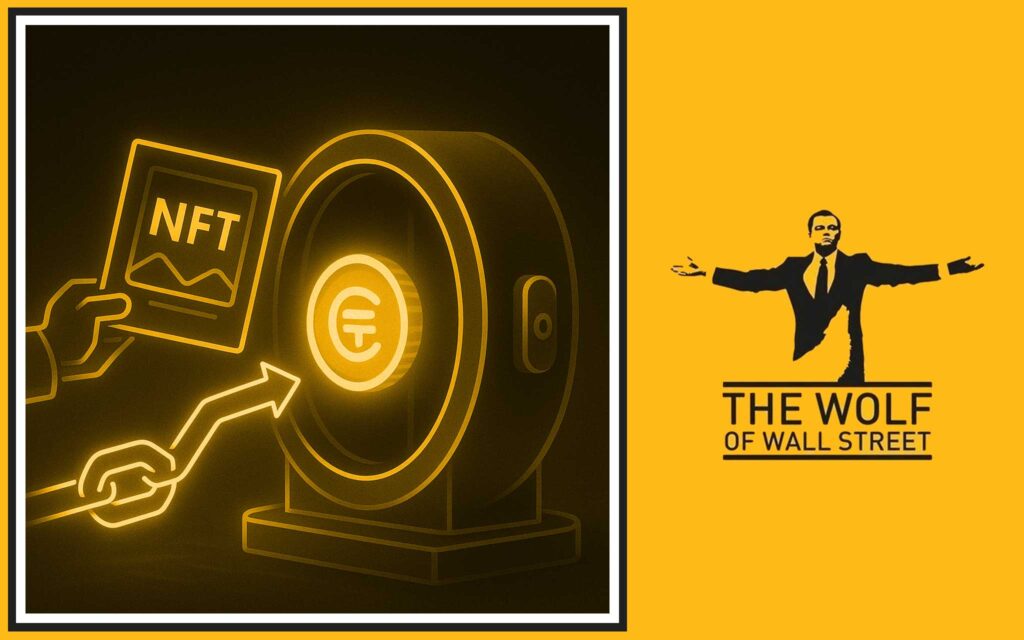
NFTX had a complex value proposition: creating liquid index funds for illiquid NFTs. This could easily have become a confusing mess of financial jargon. Instead, their litepaper was brilliant in its simplicity. They used clear analogies, comparing what they were doing to traditional ETFs like the S\&P 500, a concept most investors already understood.
They used simple flowcharts to show how a user could deposit an NFT into a vault and receive a fungible token in return. They didn’t try to impress with complexity; they built confidence with clarity. They identified a specific, high-value problem (NFTs are hard to price and sell) and presented an elegant, easy-to-understand solution. That’s how you dominate a niche.
What You Can Steal From Them
The lesson here is simple. The winners focus on the “why” and the “what,” not just the “how.” They build a compelling narrative. They use visuals and analogies to simplify complexity. They understand their audience is smart but busy. Your litepaper should do the same. It must tell a story of a clear problem, an elegant solution, and a massive opportunity, led by a team of proven winners. It’s a formula that works.
🚨 The Biggest Mistakes Amateurs Make (And How to Avoid Them)
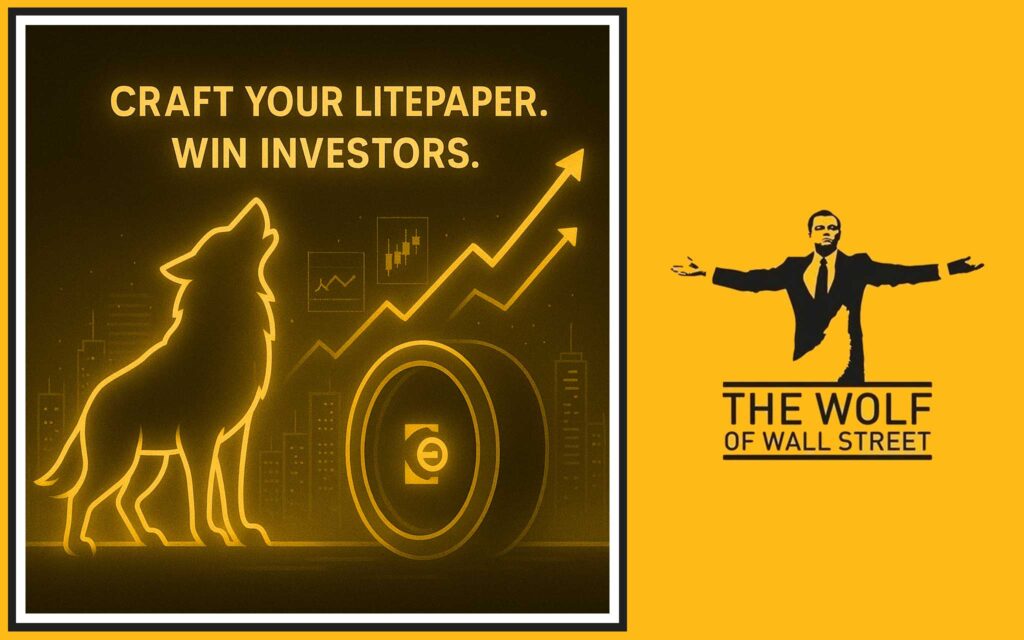
I see the same mistakes over and over again from projects that go nowhere. These are the traps that amateurs fall into, the unforced errors that kill deals before they even begin. Burn these into your brain so you never make them.
Mistake #1: A Watered-Down Whitepaper
This is the most common and laziest mistake. A project takes their 50-page whitepaper, cuts out a few sections, deletes some paragraphs, and calls it a “litepaper.” This is a guaranteed recipe for failure. The result is a document that is still too technical for investors but not detailed enough for developers. It serves no one. As I’ve said, a litepaper is a fundamentally different document. It’s a sales pitch, not a condensed technical manual. Start with a blank page and write it for an investor, from the ground up.
Mistake #2: Vague, Fluffy Language
“We are building a revolutionary, decentralised, next-generation platform to empower users through a paradigm-shifting ecosystem.” What does that even mean? Absolutely nothing. It’s a string of buzzwords that signals you have no clear idea what you’re actually doing. These words are a red flag for any savvy investor. Instead of “revolutionary,” explain what you are changing. Instead of “empower users,” describe the specific benefit they will get. Be concrete. Use numbers. Use outcomes.
Mistake #3: A Weak Call to Action
You’ve built the tension, you’ve made your case, you’ve got the investor nodding along, and then… you end with a whimper. “We hope you consider our project.” Hope is not a strategy. You must end with a bang. You must tell them exactly what to do next with urgency and confidence. “The private sale closes in 14 days. Click here to get whitelisted.” “Our Telegram has exclusive founder AMAs every week. Join now so you don’t miss out.” You have to lead them across the finish line. Don’t be passive. Be a closer.
🤝 The Strategic Role: Your Litepaper in the Grand Scheme
Your litepaper isn’t just a document you create and forget about. It’s a dynamic, strategic asset at the very centre of your fundraising and marketing efforts. Understanding its role in the bigger picture is key to leveraging it for maximum impact.
The First Point of Contact
Think of your litepaper as the gatekeeper. When a potential investor first hears about your project, the first thing they’ll ask for is a quick overview. You don’t send them a 50-page whitepaper—that’s like asking someone on a first date to meet your parents. You send them the litepaper. It’s the perfect tool to qualify interest. It gives them everything they need to make a quick “yes” or “no” decision on whether to spend more time investigating your project. It respects their time and filters for those who are genuinely serious.
A Marketing Powerhouse
Your litepaper is one of the most versatile marketing assets you have. It can be broken down into a dozen different pieces of content. Each section—the problem, the solution, the team—can be turned into a blog post, a Twitter thread, an infographic, or a short video. It’s the foundational document from which all your marketing messaging should flow. Pin it to your Twitter profile. Feature it prominently on your website. Use it as the centrepiece of your email outreach to investors and partners.
Building an Army
Here’s something most people miss: a great litepaper doesn’t just attract investors. It attracts believers. When you lay out a clear, compelling, and inspiring vision, you attract a community of people who want to be a part of it. They become your most passionate supporters, your evangelists, your army on social media. They will defend your project, promote it, and contribute to your ecosystem because they bought into the vision you sold them in those first few pages. For those ready to move beyond theory, exploring fundraising avenues like an Initial Stake Pool Offering (ISPO) can be a powerful next step.
Frequently Asked Questions (FAQs)
1. How long should a litepaper be?
Keep it between 5 and 12 pages. Any shorter and it lacks substance. Any longer and you’re defeating the purpose. The sweet spot is around 8-10 pages of pure, high-impact value.
2. Can a litepaper replace a whitepaper?
No. They serve different purposes. You need the litepaper to get investors interested, and you need the whitepaper to provide the deep technical validation for their due diligence teams. You need both weapons in your arsenal.
3. How much should I spend on designing a litepaper?
As much as you can afford to make it look world-class. This is your project’s first impression. Don’t be cheap. A few thousand dollars on a professional designer can be the difference between looking like a billion-dollar company and looking like a garage project.
4. What’s the most important section of the litepaper?
They are all critical, but if you get the “Problem” and “Solution” wrong, nothing else matters. If an investor doesn’t understand what pain you’re solving and how you’re solving it, they’ll never get to your tokenomics or your team.
5. Should I include financial projections?
Be very careful. Making specific price predictions is risky and can get you into legal trouble. Instead of saying “the token will be worth $10,” focus on the market size and the value drivers within your tokenomic model that are designed to create demand and scarcity. Show, don’t just tell.
🐺 It’s Time to Execute
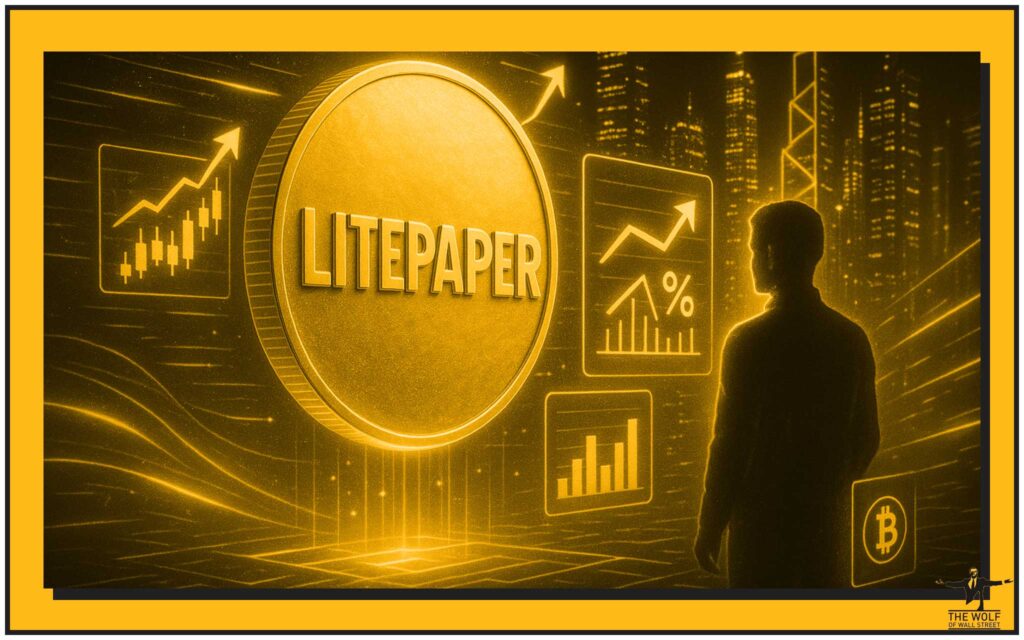
So there you have it. The litepaper is your single most powerful weapon in the war for capital. It’s not just a document; it’s your first impression, your closing pitch, and your call to arms, all rolled into one lethal package. It’s the tool that separates the pretenders who talk a big game from the players who actually get funded and build the future. We’ve covered what is a litepaper, and now the power is in your hands.
Don’t be another statistic—another failed project with a brilliant idea and a terrible, confusing pitch that went nowhere. Step up. Use this blueprint to create a document that radiates confidence, clarity, and the unstoppable promise of success. Craft a narrative so compelling that investors feel like they’re losing the opportunity of a lifetime if they don’t get in on the ground floor.

Now stop reading and start writing. The clock is ticking, and your competitors are not waiting for you. For those who are truly serious about dominating this market, who want to level up from amateur to professional, you need an edge. You need to be part of a pack of winners. That’s why having the right information is key, and knowing where to find crypto investment advice from credible sources is paramount.
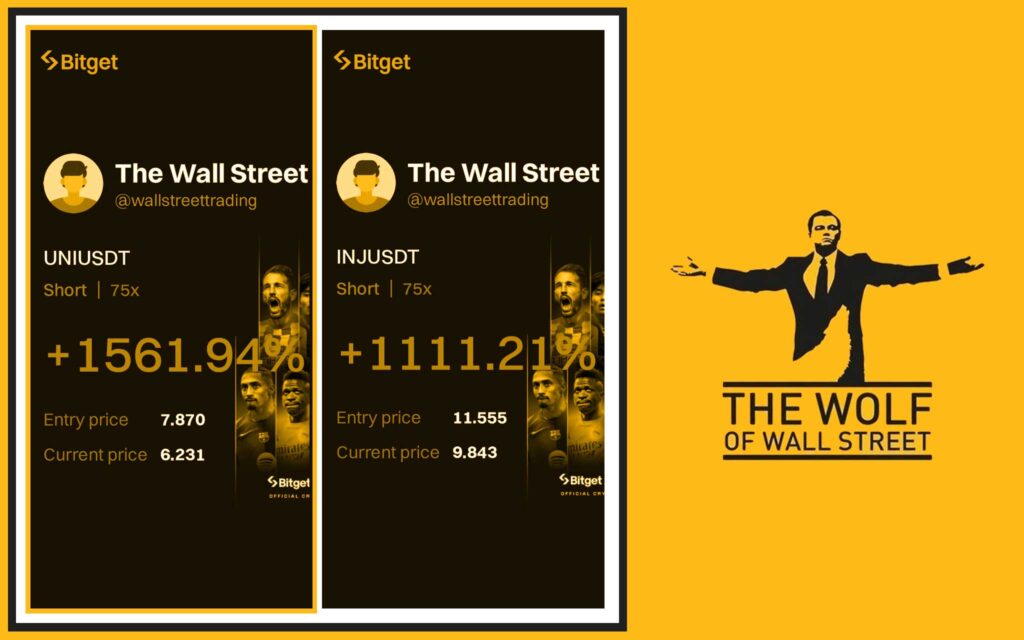
Our The Wolf Of Wall Street crypto trading community is where you’ll find the exclusive signals, expert market analysis, and essential tools to win. The choice is yours. Make the right one.

